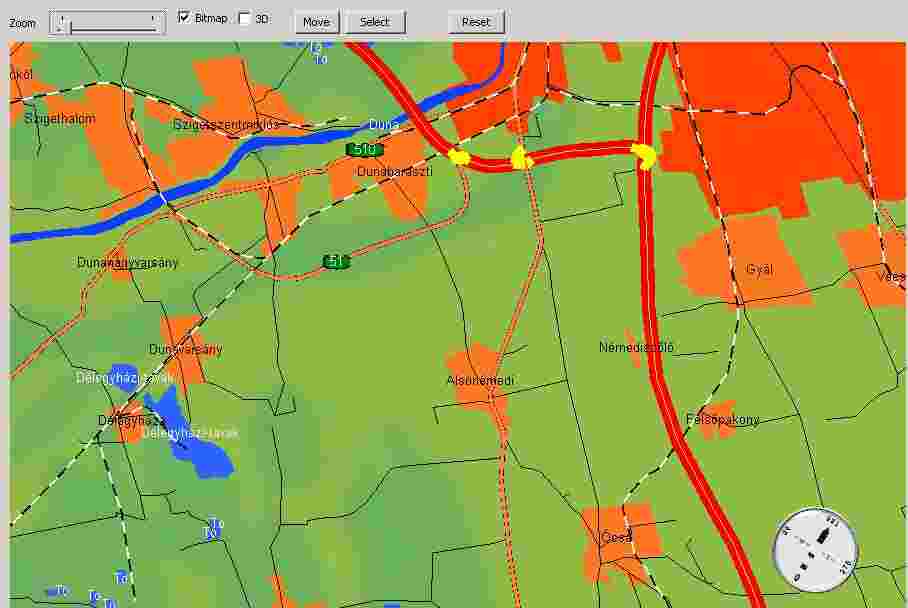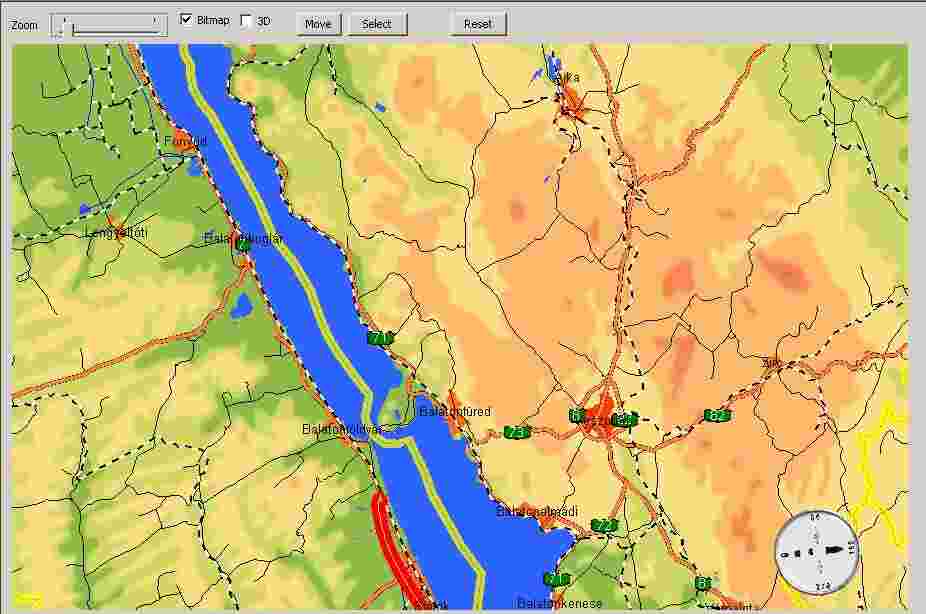DDDengine features
Capabilities
Texture/Material features:
§ 4096x4096 maximum size.
§ TGA,JPG,BMP formats.
§ Automatically MIPMAP.
§ All kinds of blend states.
§ Color key with alpha channel reference.
§ Mirror, and render to textures
§ Specular, glossiness, and level support
§ Multitexture modes with special effects:
§ Two texture/face
§ Environment map (chrome effect, and reflective surfaces)
§ Bump map
§ Water effects on surfaces
§ Special pexel shaders
 |
§ Vertex color.
§ Full texture management. (Memory management for video, and texture cache, optimized for DirectX, and PSP)
Objects:
§ Sprites.
§ Automatically bounding boxes.
§ Backface culling.
§ Alpha objects.
§ Object save, and load.
§ Automatically alpha order
Objects hierarchies, and special object structures:
§ An object can be built form several other object. This building process is also optimized.
§ Scene objects
§ Particles
§ Sprites
Physics:
§ Moveing
§ Collosions
§ Bone physics
Lighting:
§ Several hundred light sources are support. These may be of several types.
§ Point light: Spherical lighting is distance dependent.
§ Diffuse light: This is a directional light to simulate the sun
§ Specular light: This is directional lighting, to calculate light reflection. It is accurate to a single pixel.
§ Dynamic light map

§ Projected light model. Light appears as a geometrical shape, and it is transposed on the object pixel by pixel. Example.: A beam of light in a dark room. The beam itself is visible only on the reflected objects, Naturally, the light beam can be made visible as well


§ Ambient light.
§ Vertex color that can be toggled.
Windows:
§ The engine can handle a multitude of windows. This includes rendering in several windows simultaneously.
§ Handling different viewpoints
§ Fullscreen mode support.
Shadows:
§ Software shadows that include the alpha channel are possible. As a result the transparent or the semi-transparent colors are life-like as well.
§ Hardware shadows are fully supported hence these can be generated quickly and realistically. The shadows are projected simultaneously on all of the objects.
Titling:
§ 2D, and 3D fonts and text can be displayed in 2 or 3 dimensions.
Special effects:
§ Examining 3D points in the rendered scene (example.: does the filament of a light bulb show or not. This is required the correctly calculate the glow effect).
§ Calculating the intersections of points
§ Weather
Voxel based displacement map:
§ Landscape with displacement mapping on voxel base.
§ Real time stage recalculation
§ Interactive stage
§ Optimized for software vertex calculation by avoid the uncached vertexes on PSP, and the cache hits in DirectX buffers

Map components:


Nurb, and bezier patch support:
- Full HW supported on PSP

Lines:
§ Buffered, where emphasis is placed on speed.
§ Pencil can be picked up or put down
§ Infinite buffer
§ Textured lines
§ Wide lines (vertex shader recalculated)
Dynamic buffers:
§ 2D screen layers can be created dynamically, changeable 3D objects or polygons .
Captures/Video:
§ Video with sound can be saved in any format that is supported by the user’s installed codec.
§ Images are JPG, TGA, or BMP.
§ WEBcamera, and capture devices support.
Special render modes:
§ Wireframe mode.
§ Flat mode
§ Negative light.
§ Fog.
Editoring features:
· multi-windowed support
· special line supports
Antialias:
· Hardware FSAA (PC only)
· Software FSAA PC
Animations:
· Keyframes
· Keymatrixes
· Morph
· Bones